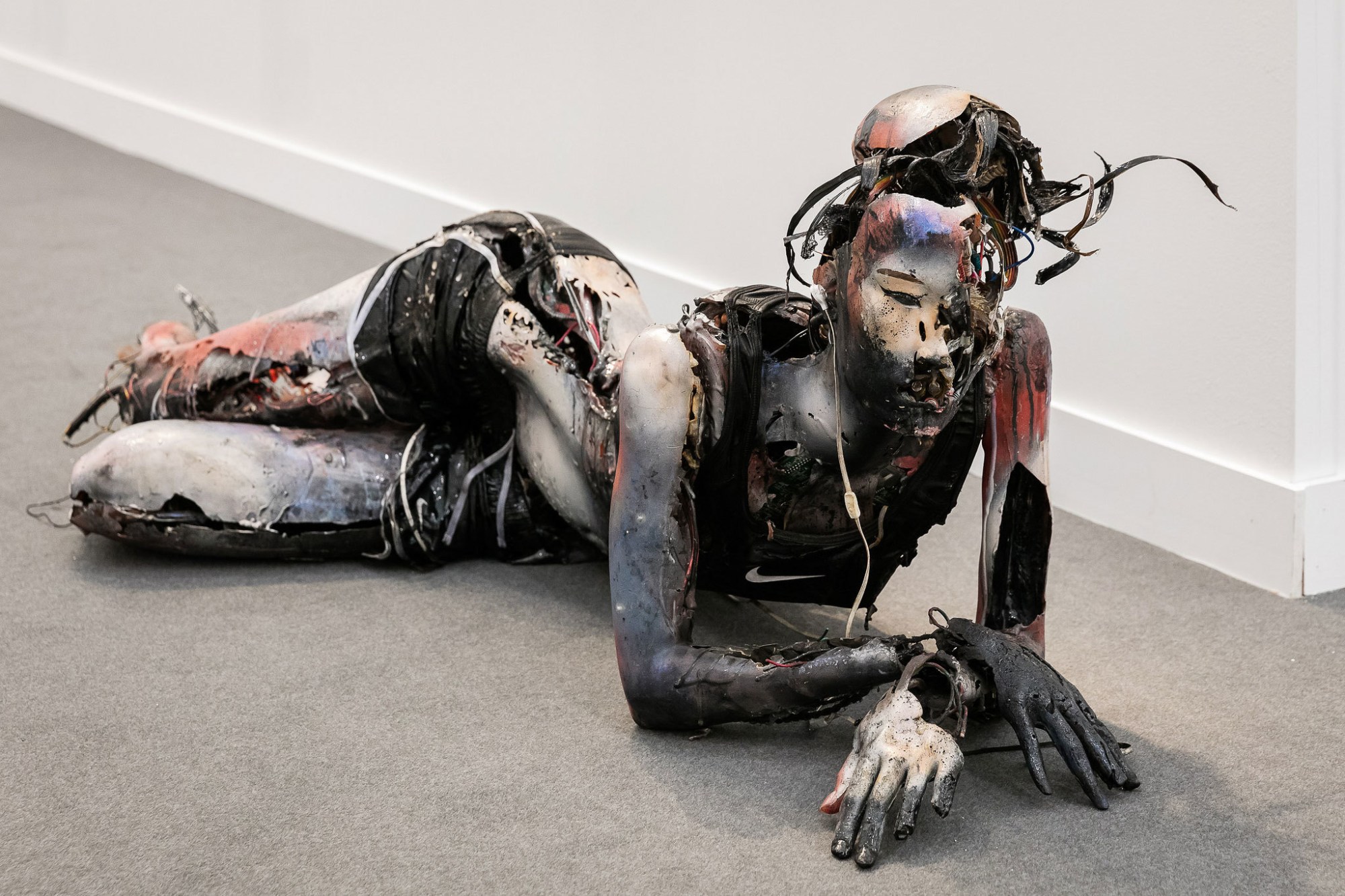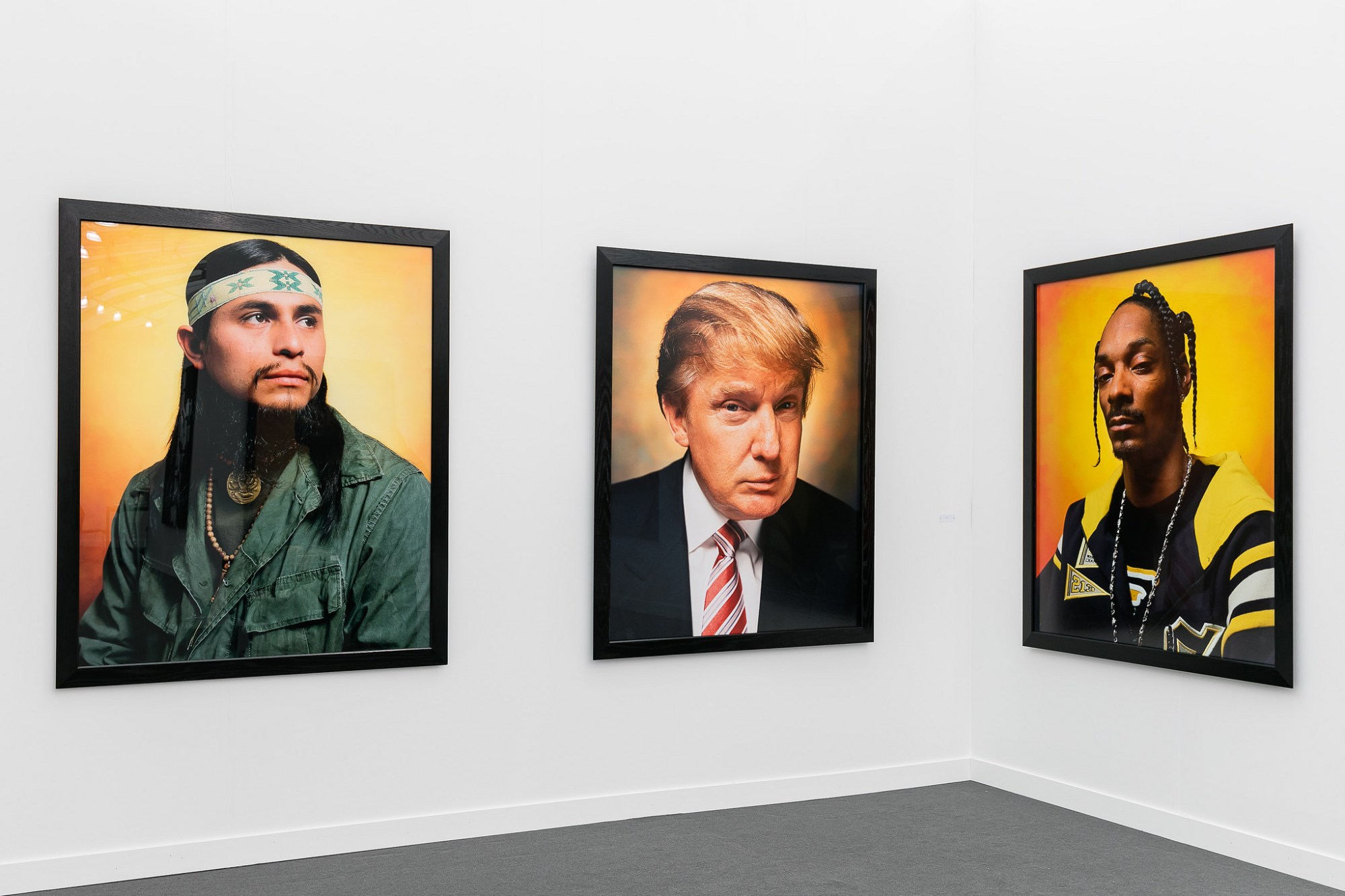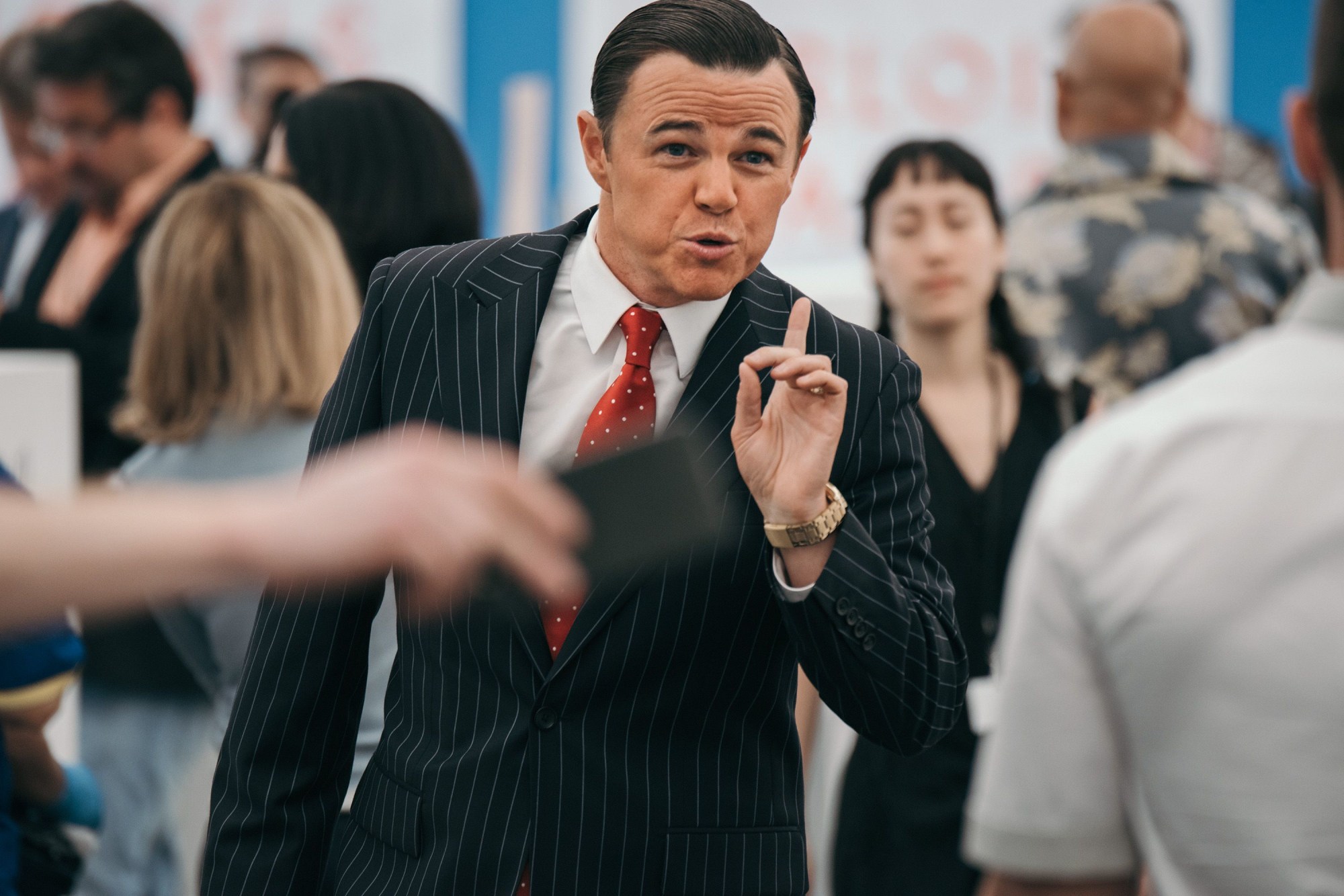Over the past decade and a half, Frieze Art Fair has developed into an transatlantic art world megalith, first as London’s de-facto annual art event, and since 2011, as a serious competitor within the already-packed schedule of the New York Art calendar to its other seasoned fairs such as The Armory Show and NADA.
In New York, Frieze gathers 160 of the world’s leading galleries, ranging from the youngest and brightest to those specializing in 20th-century masters. A far cry from London’s pristine Regent’s Park location, it’s the remote industrial Randall’s Island — tucked between The Bronx, Queens, and North Manhattan — that hosts the distinctive luxury tent and its wealthy clients from Thursday through to Sunday evening. This week, collectors and mortal fair-goers had to not only defy the Harlem River (the fair is most easily accessed by ferry), but the torrential rains that descended on New York Friday morning, causing quite a bit of chaos for exhibitors and visitors alike. Despite several leaks, no wifi, and a dramatic soundtrack of rain against the tent canvas, Frieze managed to deliver its annual snapshot of the current art market.

Fairs read like trend reports, and function as a marker of the art season’s latest news: Wolfgang Tillmans, who is currently enjoying a huge retrospective at Tate Modern in London, showed arresting photographic scenes at both Galerie Buchholz (New York and Cologne) and Marian Goodman (London); Societé Berlin previewed a sculpture by American artist Bunny Rogers, who is soon to open her first solo show at the Whitney Museum of Art; and Foxy Productions displayed photographic works by Canadian artist Sara Cwynar, whose idiosyncratic approach to the study of colour and design history has received a great deal of attention as of late.
Inevitably, Trump made an ambivalent appearance in several artworks, most notably directly opposite a young Snoop Dogg in Andres Serrano’s famous America series (2001-2004), which was re-presented at Galerie Nathalie Obadia. Beyond this, however, there was a notable absence of politically explicit work, with artists turning instead towards a more subtle study of materials. Several artists found poetry in the adaptation or re-use of mass-produced industrial materials, like British artist Zoë Paul, who weaves sensuous wool tapestries onto found vintage fridge grills. A brand new work by the Mexico City-based artist Pia Camil consisted of a tied-up sheet in acid-dyed shades of blue, carrying a stack of cheap knock-off Nike shoes, found amongst street vendors in the artist’s home town. These highly aesthetic dyes are not human creations, however, but appear as the accidental traces at the end of runs of industrial mass-dying of fabric. At London space The Sunday Painter, Polish artist Piotr Lakomy displayed a series of mesmerising wall-based manipulations of aluminum honeycomb, an industrial metal grid structure that gets its durability and strength from nature. In the hands of Lakomy, however, these forms become organic again, suggestive of a bodily imprint or a hilly landscape.

The fair’s commissioning arm Frieze Projects is always highly anticipated, and this year Canadian net artist Jon Rafman presented his video piece Dream Journal. Rafman recorded his daydreams, and sent them off to a professional animator to turn into a series of strange surreal works. They’re a crazy tour-de-force of non-narrative, dated 3D cartoons as imagined by an AOL Kafka maybe — a surreal urban environment inhabited by copulating cyborgs, violent half-humans, alien cowboys, and talking animals, that read as more than anything as The Sims go into the GTA universe and take acid. Dream journals are a common psychoanalytical device, but here, it invited for little more reflection than what seemed to be the manifestation of a computer nerd’s wet dream.
More subtle was the commission by NYC-based, Croatian-born artist Dora Budor, who released a series of cinematic doubles of Leonardo DiCaprio (who himself is an avid art collector, and sometimes attendee of Freize) through the fair channelling some of his iconic film roles. With her long-standing interest in the forms of reality produced by cinema, Budor approached the fair as a space of theatre, performance, and celebrity scouting. By adding heightened energy to the already-charged financial and critical space of the fair, where everything and everyone are potentially an artwork, the spectacular dimension of Dora’s intervention functioned as a clever critique of Frieze’s “event economy.”

Overall, the Frame section was the real attraction, where curators Jacob Proctor (Neubauer Collegium) and Philippe Pirotte (Portikus, Frankfurt) advised on museum-quality solo presentations by galleries, both young and old. Eva LeWitt presented magnified and curtain-like sensual arrangements with Oslo gallery VI VII, and at Antenna Space, Zhou Siwei displayed his small, geometrical object-images that bring together a variety of forms and fractured architectural images.
Martins Gallery presented a retrospective selection of works by Mexican conceptual artist Ulyses Carrión, an avid book dealer and mail artist, and arguably one of the most important characters of the transatlantic avant-garde art in the 70s and 80s. Carrión’s satirical performance and video work Death of the Art Dealer (1982) allegorically depicts a German black-and-white melodrama on a portable television that slowly creeps across the room thanks to its carrier. After a while, however, it becomes clear that Carrión is trying to imitate whatever is happening on the little screen, moving around paralleling the original camera movements to his own body.

The final showstopper was the Susan Cianciolo presentation at Bridget Donahue (New York), which brought together a wide range of sketches by the designer-artist from many years of her practice, which still goes under-recognized for its playful merging of the aesthetic languages of fashion, art, and design. For an art market known and criticised for always perpetuating the new, it was refreshing to see two bold historical and museum-worthy shows, and a timely reminded of the power of the old, and the relevance of the fair itself.
Credits
Text Jeppe Ugelvig
